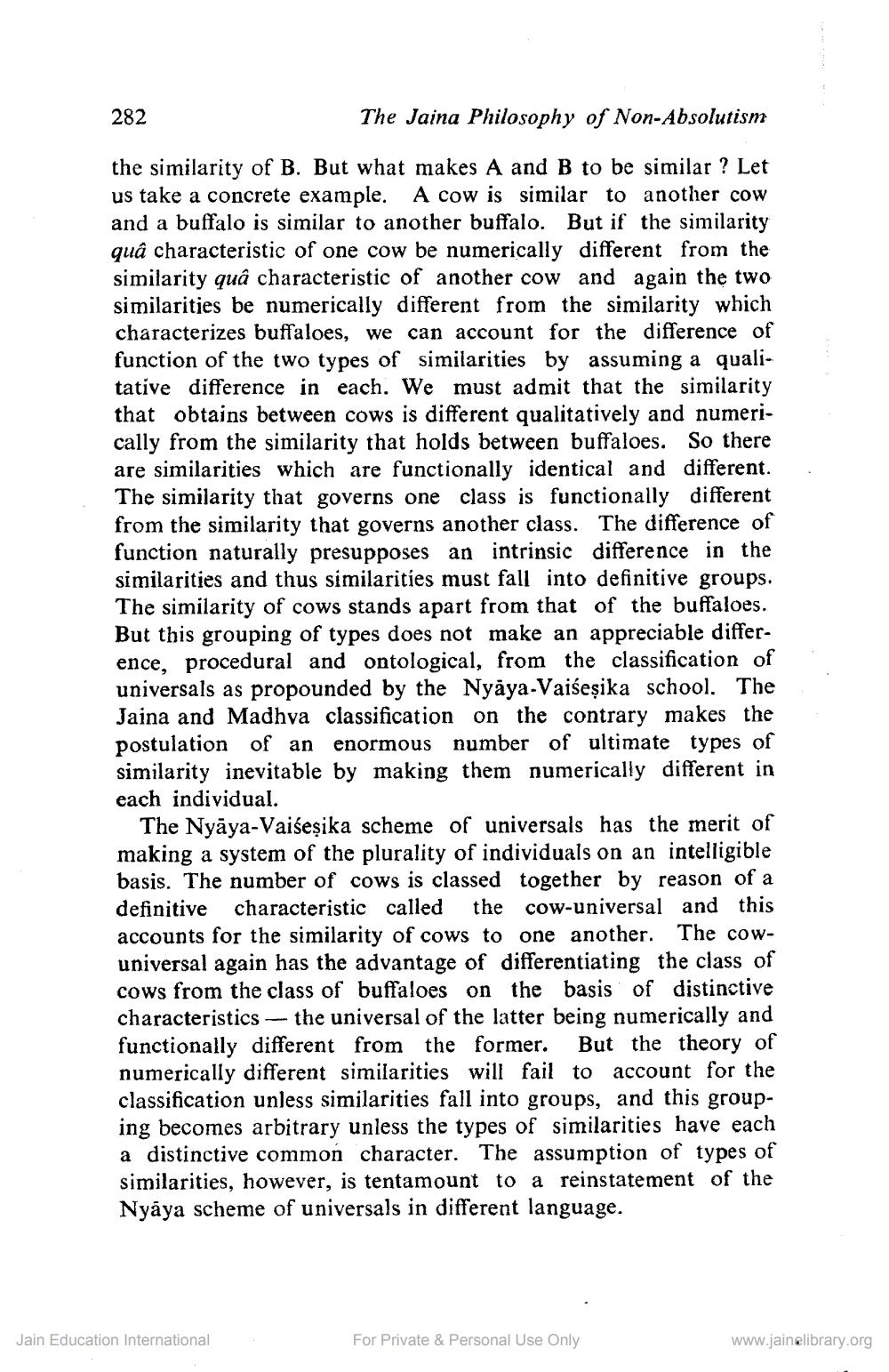________________
282
The Jaina Philosophy of Non-Absolutism
the similarity of B. But what makes A and B to be similar ? Let us take a concrete example. A cow is similar to another cow and a buffalo is similar to another buffalo. But if the similarity quâ characteristic of one cow be numerically different from the similarity quâ characteristic of another cow and again the two similarities be numerically different from the similarity which characterizes buffaloes, we can account for the difference of function of the two types of similarities by assuming a qualitative difference in each. We must admit that the similarity that obtains between cows is different qualitatively and numerically from the similarity that holds between buffaloes. So there are similarities which are functionally identical and different. The similarity that governs one class is functionally different from the similarity that governs another class. The difference of function naturally presupposes an intrinsic difference in the similarities and thus similarities must fall into definitive groups. The similarity of cows stands apart from that of the buffaloes. But this grouping of types does not make an appreciable difference, procedural and ontological, from the classification of universals as propounded by the Nyaya-Vaišesika school. The Jaina and Madhva classification on the contrary makes the postulation of an enormous number of ultimate types of similarity inevitable by making them numerically different in each individual.
The Nyāya-Vaiseșika scheme of universals has the merit of making a system of the plurality of individuals on an intelligible basis. The number of cows is classed together by reason of a definitive characteristic called the cow-universal and this accounts for the similarity of cows to one another. The cowuniversal again has the advantage of differentiating the class of cows from the class of buffaloes on the basis of distinctive characteristics — the universal of the latter being numerically and functionally different from the former. But the theory of numerically different similarities will fail to account for the classification unless similarities fall into groups, and this grouping becomes arbitrary unless the types of similarities have each a distinctive common character. The assumption of types of similarities, however, is tentamount to a reinstatement of the Nyāya scheme of universals in different language.
Jain Education International
For Private & Personal Use Only
www.jainelibrary.org




